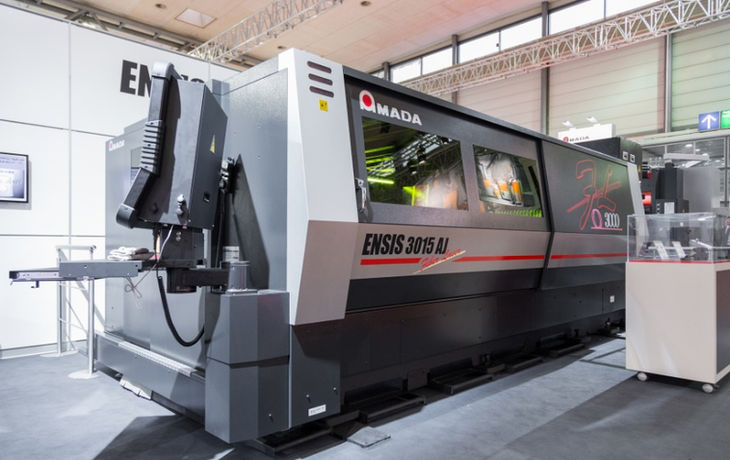Acerca de
SPECIALISTS IN
LASER CUTTING
FARGO Steel is your laser cutting specialist. In business since 1988, FARGO Steel offers quality laser cut components from various materials. We offer guaranteed accuracy and client satisfaction, whether you require cutting services or a complete supply of material and laser cutting.
Our superior technology enables our highly-skilled team to laser-cut materials for industrial and manufacturing applications.

Mild Steel

Stainless Steel

Aluminum

Galvanized
We provide a 24hr-turnaround time for our Laser Cutting service with powder coating options.
We're specialists in:
-
Laser Cutting of all Steels (Amada 6kW Fiber Optic)
-
Flame Cutting
-
Plasma Cutting
-
Punch Pressing (Amada AE 2510 NT)
-
Tube Cutting
LASER CUTTING
APPLICATIONS


AUTOMOTIVE
Fargo ensures the end product is reliable and safe for the consumer


ELECTRONICS
Fargo uses lasers to cut materials and parts to form larger finished products


AEROSPACE
Fargo ensures that aerospace vehicles operate with precision and durability


MEDICAL
Fargo innovates as we strive to miniaturize devices and processes
LASER CUTTING APPLICATION
BENEFITS
CONTROL
Laser cutting allows for great control over beam intensity, length and heat output
PRECISION
Laser cutting delivers precise cuts with smooth finishes
SPEED
Laser cutting is much faster than traditional methods and therefore offers faster turnaround times
NON-CONTACT
Laser cutting is a non-contact process, increasing productivity by decreasing downtime
LASER CUTTING
FAQ'S
-
Which industries commonly cut with lasers?The control that cutting with lasers provides, as well as the numerous materials that it can successfully work with, means that it unsurprisingly finds use in a host of different industries. You may want to consider laser cutting if you are currently in one of the following industries: Construction: Steel is widely used in construction for building structures, such as bridges, skyscrapers, and stadiums, as well as for reinforcing concrete. Automotive: Steel is used extensively in the automotive industry for making vehicle frames, body panels, and other components due to its strength and durability. Manufacturing: Steel is used in the manufacturing industry for making machinery, tools, and equipment due to its strength, hardness, and resistance to wear and tear. Energy: Steel is used in the energy industry for making pipes, turbines, and other equipment used in power generation, oil and gas extraction, and other applications. Aerospace: Steel is used in the aerospace industry for making aircraft frames, landing gear, and other components due to its strength, lightweight, and durability. Medical: Steel is used in the medical industry for making surgical instruments, orthopedic implants, and other equipment due to its biocompatibility, strength, and resistance to corrosion. Consumer goods: Steel is used in a wide range of consumer goods, such as appliances, cutlery, and furniture, due to its durability, affordability, and aesthetic appeal. Packaging: Steel is used in the packaging industry for making cans, containers, and other products due to its strength, durability, and recyclability. Defense: Steel is used in the defense industry for making weapons, vehicles, and other equipment due to its strength and durability. Infrastructure: Steel is used in infrastructure projects, such as pipelines, bridges, and tunnels, due to its strength, durability, and resistance to corrosion. With all of these industries, production and manufacturing rates have been increasing over the years, while parts and components have become smaller and smaller. Due to this, laser cutting has noticed an increased use throughout many of the manufacturing processes.
-
How does laser cutting work?Laser cutting works by having a high-powered, highly-focused laser beam run through a material, leaving a clean cut with a smooth finish. This beam can be either pulsed, meaning the cut is delivered in pulses, or continuous wave, meaning the beam is kept focused on the material until the cut is delivered. Cutting with lasers star ts by piercing the material with a hole, and then continues the cut from there. The beam intensity, length and heat output can be controlled, allowing the cut to be delivered in different ways and in different times. The process is, in some ways, similar to drilling and engraving. Drilling involves the creation of popped ‘thru-holes’ in materials, but occasionally these holes are created as dents rather than thru-holes. These dents, acting like engravings, are also considered ‘cuts’ in a material.
-
Which metals can be laser cut?A huge variety of metals, can be cut including: Titanium Steel Nickel Tungsten Brass Copper Aluminium While metal is the most common material that is cut with lasers (e.g. hydro formed parts) it is used with many other materials too, as listed above. Fiber lasers can cut a variety of shapes including tubes, bars, sheets, etc.
-
What materials can be cut?Thanks to the control of beam intensity, length and heat output as described above, lasers are great at cutting many materials. Listed below are just some of the materials that cut well with: Metals – Although stating the obvious a primary use of laser cutting is the precise cutting of a wide-variety of metals across a diverse number of industries. Reflective metals – It’s worth noting separately that fiber lasers can also cut reflective metals, which can prove challenging with other techniques Silicon – Often used in micro applications, fiber lasers can safely and precisely cut silicon for a wide-variety of uses in industries such as electronics and semi-conductors Ceramics – Various ceramics are frequently cut using fiber laser cutting methods Glass – Various glass types can be cut to the precise measurements needed Plastics and polymers Wood (although care is needed to prevent scorch/burn marks) Gemstones – Laser cutting can also be used with strong materials such as diamonds and other gemstones
-
How accurate is cutting with lasers?One of the biggest benefits of the cutting process is the accuracy and precision that it provides to its users. With a focused, narrow beam, it can provide an ultimate level of accuracy. Slits with widths as small as 0.1mm are achievable with laser cutting.



























